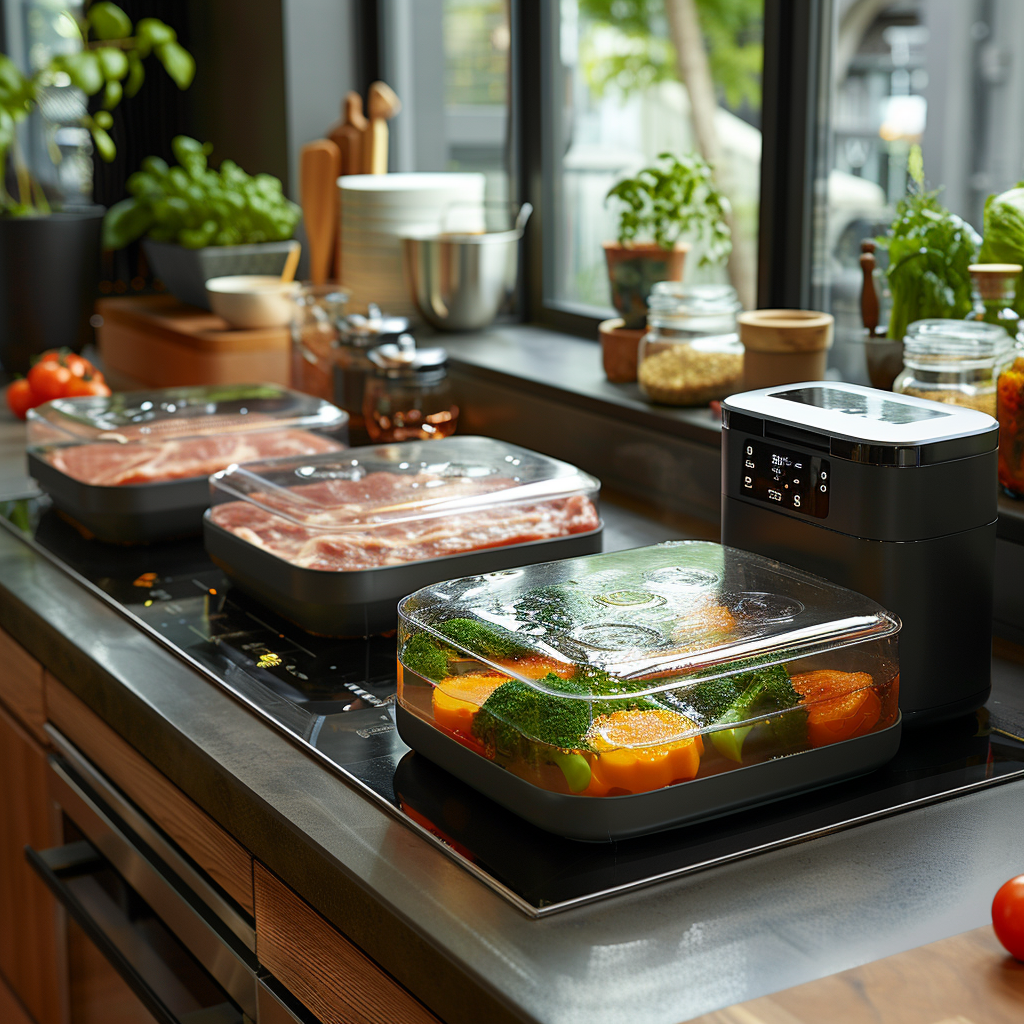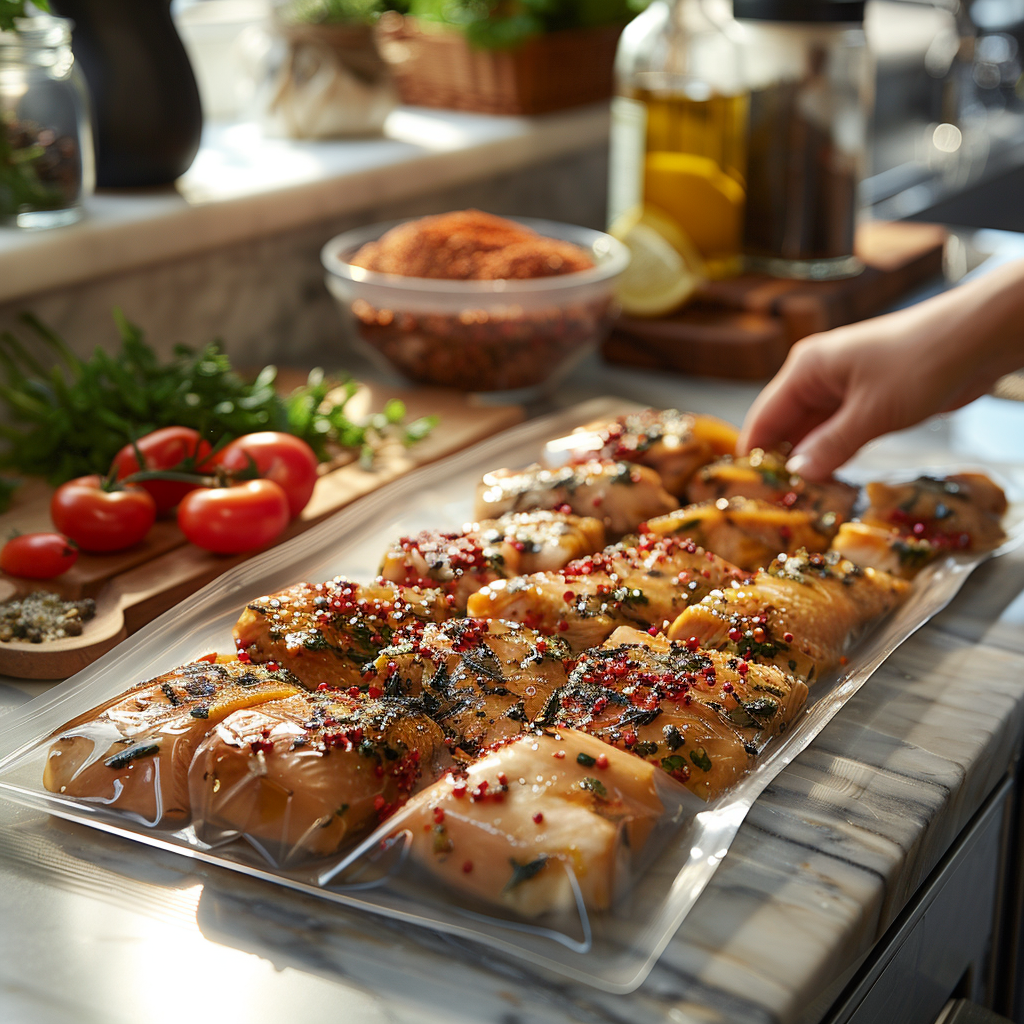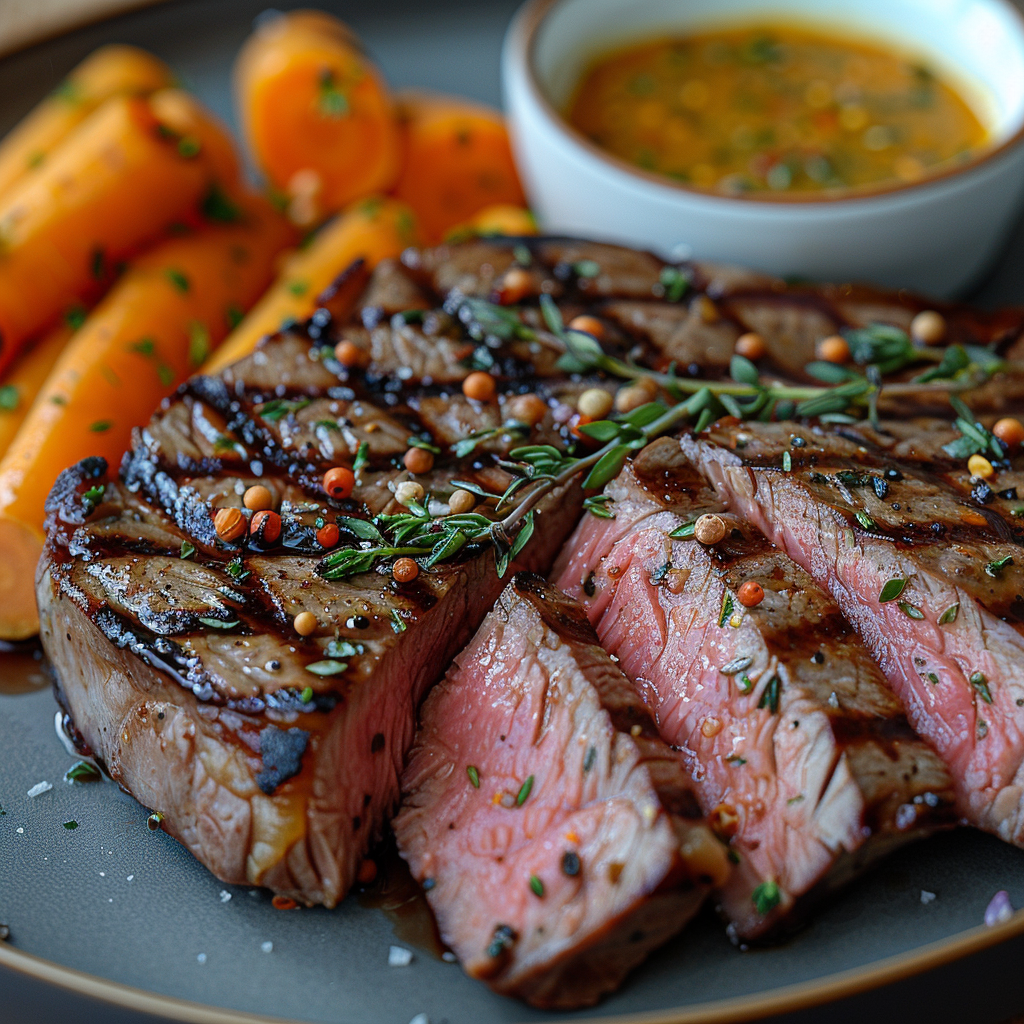Unlocking Flavors with Low Temperature Cooking
Have you ever wondered how your favorite restaurant achieves that perfect texture and flavor in their dishes? The secret might just be low-temperature cooking, also known as sous vide cooking.
This method improves taste and keeps more of the meat’s moisture than traditional cooking because it uses gentle heat. I’ve learned how transformative this method can be in my own kitchen, which has opened up flavors that are truly amazing.
Join me as we talk about how low-temperature cooking is changing kitchens at home and in restaurants. Understand how it works scientifically and how it can improve food taste.
Understanding the Basics of Low-Temperature Cooking
Understanding the basic ideas behind low-temperature cooking is important before you start. This method is all about precise cooking so that every dish turns out perfectly after being slow-cooked. Let’s get to the heart of it.
What is low-temperature cooking?
Low-temperature cooking, also known as sous-vide, is a way to cook food slowly in a controlled environment with low heat for a long time. By placing ingredients in vacuum bags and maintaining a precise temperature in a water bath, this cooking science ensures uniform cooking and optimal softness.
Benefits of Low Temperature Cooking
There are many benefits to using this technique. First, it makes flavors stronger while letting vegetables and meats keep their natural juices and smells. It also preserves nutrients that other cooking methods would otherwise lose. Finally, it’s a stress-free way to cook because the precise cooking method takes away the need to guess, so the slow-cooked food is always perfect.

Essential Equipment for Low Temperature Cooking
It’s important to have the right tools for low-temperature cooking to work at its best. There are three things that you must have: immersion circulators, vacuum sealers, and water baths.. These sous vide tools ensure speedy and uniform cooking, making them indispensable kitchen tools.
Immersion Circulators
The immersion circulator is the most important part of any low-temperature cooking setup. The immersion circulator maintains the water at the precise temperature required for sous vide cooking. This kitchen tool attaches to the side of any pot, creating a consistent water bath to ensure the perfect cooking of meals.
Vacuum Sealers
Vacuum sealers are essential for cooking at low temperatures. They take air out of special bags to keep your ingredients compressed and free of outside contaminants. Using a vacuum sealer makes cooking faster and easier because it spreads heat evenly and keeps flavors in.
Water Baths
When cooking at low temperatures, you need a water bath that you can count on to keep the right temperature. Using a regular kitchen pot or a container made just for a water bath and adding an immersion circulator makes sure that the cooking environment is stable and accurate.

Choosing the Right Ingredients for Low Temperature Cooking
Part of what makes low-temperature cooking work is the food you use. To make your dishes taste better, you need to choose fresh, high-quality produce. Fresh fruits and vegetables not only add color, but they also have nutrients that make food taste better overall.
It’s also important to have excellent cuts of meat. When you buy meat, choose cuts with lots of marbling. This will make sure that the meat is tender and juicy. You can find premium meat at stores like Whole Foods and local butchers.
For the best flavor, you need to use fresh herbs and spices. Aromatic herbs like thyme, rosemary, and basil are better than dried ones because they add deeper flavors. Try out a bunch of different spice blends until you find the one that tastes best to you.
When you mix these high-quality ingredients together, you’ll get the best flavor from your low-temperature cooking. When you cook, buying fresh food and good cuts of meat will pay off with rich, tasty meals every time.
Techniques for Mastering Low Temperature Cooking
To get perfect results when cooking at low temperatures, you need to pay close attention to the little things and know a lot of different cooking techniques. You can make food that tastes like it came from a restaurant at home by controlling the time and temperature, using crisping and finishing tips, and using the right crisping and finishing techniques.
Control Time and Temperature
Setting the right time and temperature is one of the most important parts of cooking at a low temperature. Ensure that you cook the food for the correct duration and temperature. Use a good thermometer to monitor the food as it cooks, and adjust the cooking time for different types of food as necessary.
Seasonings and marinades
Seasoning tips are essential if you want to make your food taste better. Put herbs, spices, and liquids in the meat to make it taste better. Always generously season your ingredients before sealing them. This lets the flavors soak in during the slow cooking process, making the food taste amazing.
Crisping and finishing
Once you’ve cooked the food to perfection at a low temperature, add texture by finishing and crisping it. To sear the outside of your cooked food, use a hot pan, grill, or broiler. This step not only makes the dish look better, but it also adds a pleasing contrast of textures that takes your cooking to the next level.
Common mistakes to avoid
Low-temperature cooking is useful but dangerous if done improperly. To help you find your way around, I’ve listed some common mistakes and how to fix them.
Improper Sealing
One common mistake is not sealing properly. A weak seal can let water into the bag, which will make your food go weak. Make sure you get a tight seal to keep the temperature stable and stop contamination. Using a reliable vacuum sealer can greatly reduce this risk.
Incorrect temperature settings
When temperatures are too high or too low, catastrophic things can happen. To get the best results, it’s important to keep the temperature just right. To avoid this mistake, you should always check your settings again, and you might want to buy an accurate immersion circulator.
Skipping the final steps
Another step often overlooked is the finishing process. Low-temperature cooking makes sure that the food is tender, but if you skip the searing or crisping step, your dish will lack texture and flavor. Don’t forget about this last step, which will help you get better and make a good meal even better.
Recipes to Try with Low-Temperature (Sous Vide) Cooking
Are you ready to start cooking gourmet meals at home? These sous vide recipes will help you try new things in the kitchen. Let’s improve your cooking skills with these delicious ideas.
- Perfectly Cooked Steak: With sous vide, you can achieve a steak that’s tender and flavorful every time. Season your steak generously, vacuum seal it, and cook it at 130°F for 1-2 hours. Finish by searing it in a hot pan.
- Velvety Carrots: For vegetables that melt in your mouth, try cooking carrots at 183°F for 1 hour. Add a touch of butter and a sprinkle of salt, and you’ll have a side dish that pairs beautifully with any main course.
- Juicy Chicken Breast: Never suffer dry chicken again. Cook chicken breasts at 140°F for 90 minutes. Afterward, sear the skin to crispy perfection for an irresistible finish.
- Poached Pears: Enhance your desserts with sous vide. Poach pears at 175°F for 1 hour in a mixture of white wine, sugar, and vanilla. Serve with a dollop of whipped cream.
- Flavorful Fish Fillet: Fish cooked sous vide retains its delicate texture. Cook at 130°F for 30 minutes. A squeeze of lemon and some fresh herbs make a simple yet elegant meal.
These recipes are a wonderful place to start if you want to learn how to cook gourmet meals at home. To find your own sous vide recipes, try out different spices, flavors, and cooking methods. There are so many things you can try in the kitchen that every meal is a new adventure.

In conclusion
Now that we’ve learned about low-temperature cooking, it’s clear that this method has a lot of room for improvement in the home kitchen. Along the way, we’ve looked at the basics, necessary tools, and even tasty recipes that make each ingredient taste its best. This new way of cooking will change the way we cook forever, guaranteeing tasty and tender results.
This trip shows how low-temperature cooking is changing the way people cook in their own homes. We can taste flavors we couldn’t even imagine before we learned how to control time and temperature. Every step, from picking the right ingredients to making the perfect seasoning, brings us closer to the pinnacle of food. This way of cooking has helped me learn new recipes and has made cooking both a science and an art.
Now that you know more about flavor, I want you to enjoy your own journey. Try out different ingredients and get better at your cooking methods, and then enjoy the delicious food that low-temperature cooking can make. Let’s keep improving and coming up with new ways to cook, one perfectly cooked dish at a time.
FAQ
What is low-temperature cooking?
“Sous vide,” also known as low temperature cooking, involves cooking food at a low temperature for an extended period. This precise method ensures complete cooking of the food, preserving its moisture and flavors, which high temperatures often deplete.
What are the benefits of low temperature cooking?
Low-temperature cooking has many benefits, such as better flavor retention, the ability to achieve slow-cooked perfection, and the ability to keep moisture longer. Additionally, it preserves nutrients lost at higher temperatures and reduces cooking stress, making it ideal for both home cooks and professional chefs.
What equipment do I need for low temperature cooking?
Immersion circulators, vacuum sealers, and water baths are some of the most important tools for cooking at low temperatures. These sous vide tools help keep temperatures exact and make sure cooking goes quickly and evenly, which are all very important for getting perfect results.
How do I choose the right ingredients for low temperature cooking?
For low-temperature cooking, it’s important to pick fresh vegetables and suitable cuts of meat. The quality of your ingredients directly influences the flavor and overall success of your dish, so selecting the best ones will enhance your cooking and enhance the taste of your dishes.
Can you provide some techniques for mastering low-temperature cooking?
Of course! To master low-temperature cooking, you have to learn how to control time and temperature to get the food just right. Seasonings and marinades can also make the flavors even better, and techniques like crisping and finishing are important for giving your food the right texture.
What are some common mistakes to avoid in low temperature cooking?
Some of the most common mistakes are not sealing the vacuum bags properly, setting the temperature incorrectly, and skipping important steps at the end. By avoiding these common mistakes in the kitchen and following exact steps, you can fix problems and improve your skills so that you always get perfect results.
What are some recipes I can try with low-temperature cooking?
With low temperature cooking, you can make a huge variety of foods, from gourmet meats to smooth vegetables. You can try new things in the kitchen with these sous vide recipes, and your friends and family will be amazed at how delicious and restaurant-quality the food is that you make at home.